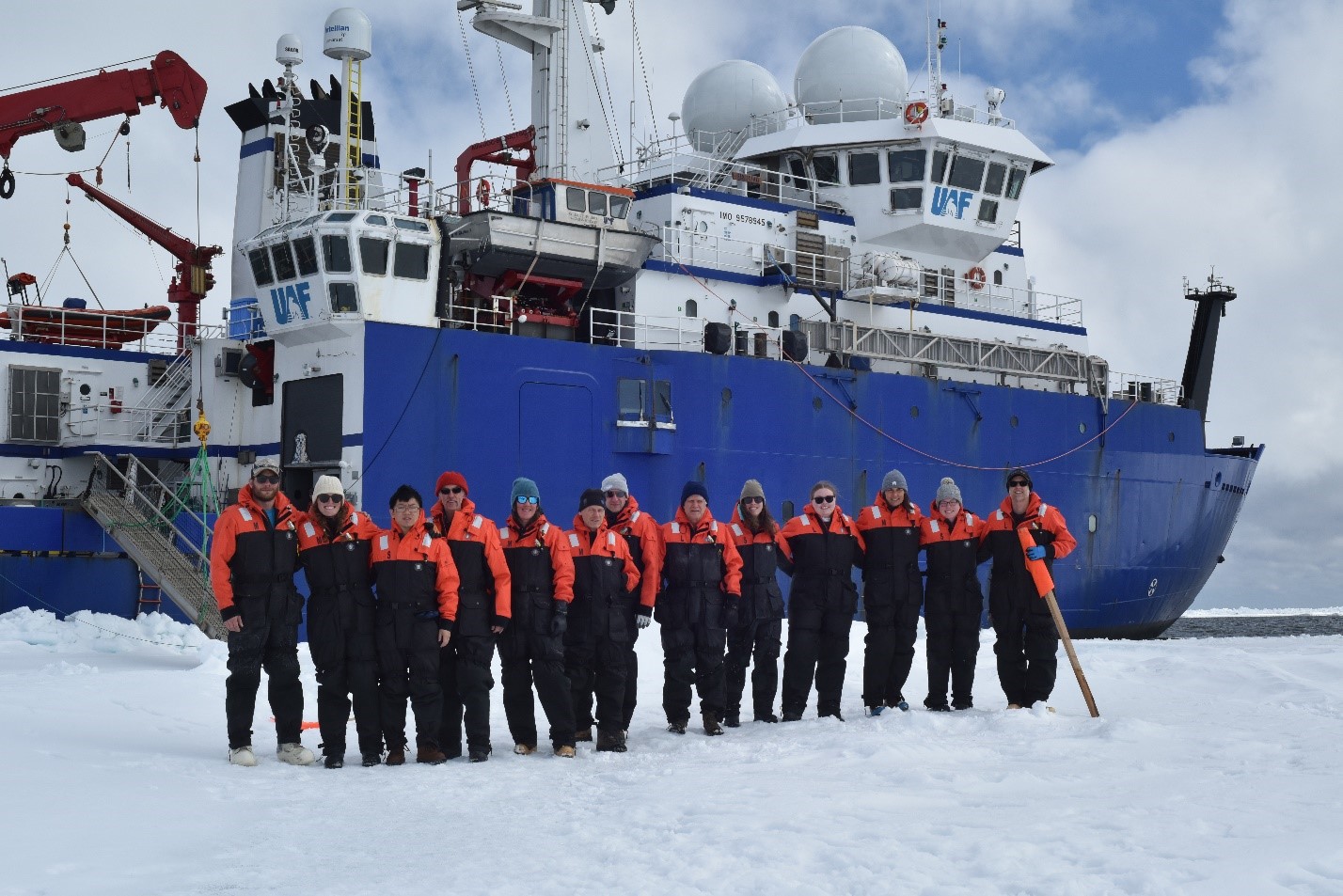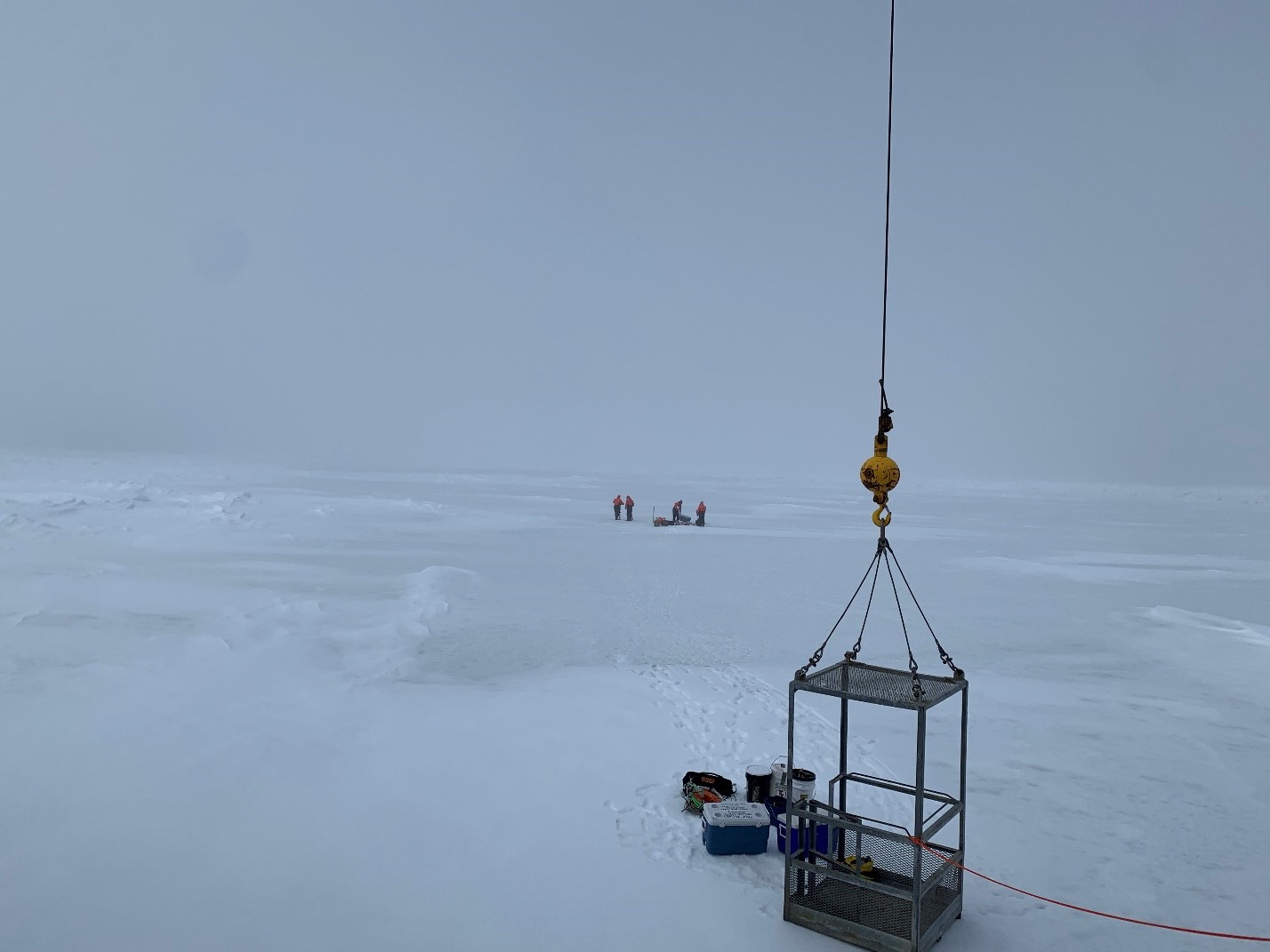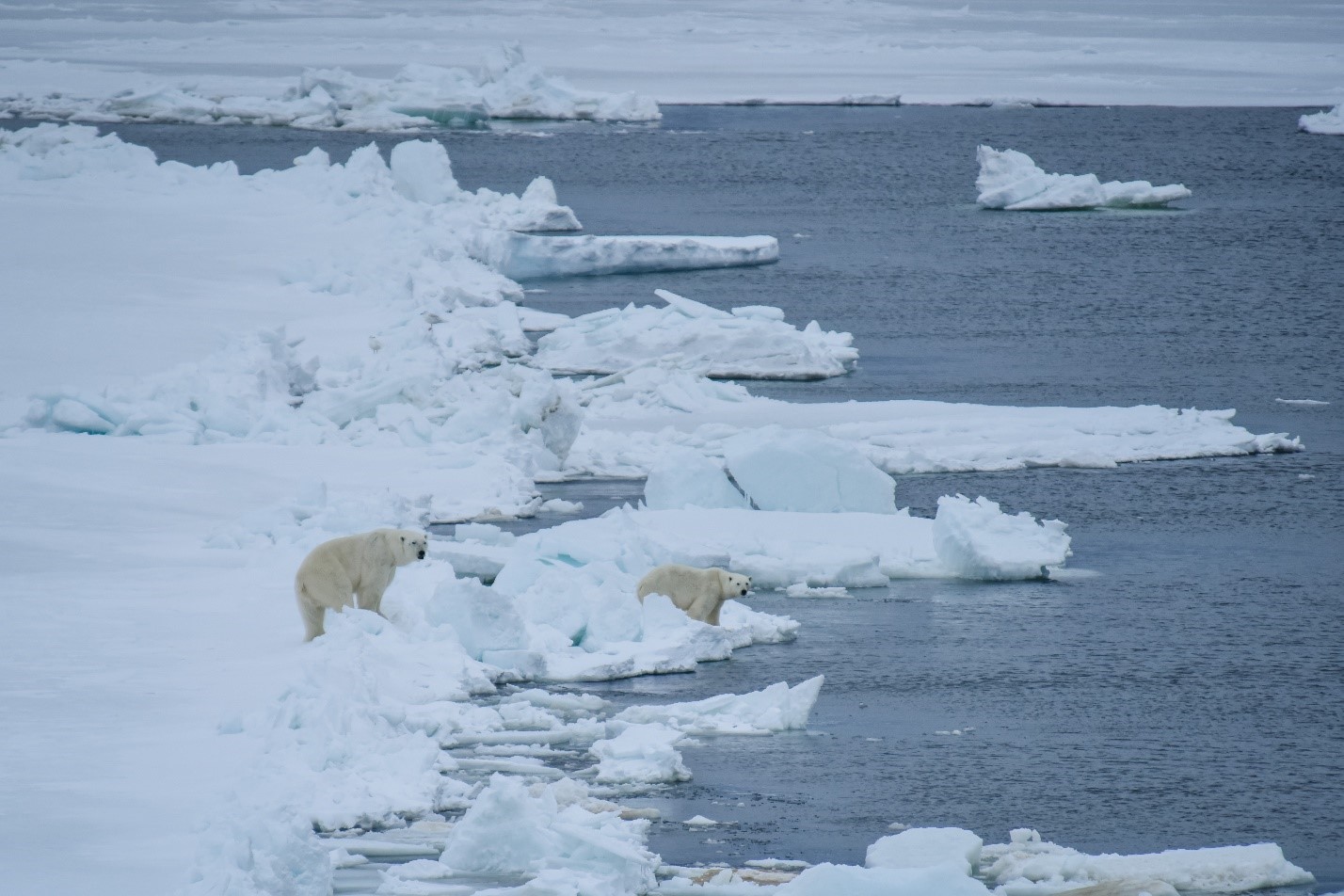In early May of 2021, two faculty members and four students from our department set out for an Arctic research cruise. Led by faculty member Prof. Rob Mason, the group spent two weeks quarantining on the remote island of Unalaska in the Aleutian chain before departing on a three-week oceanographic cruise.
The Arctic, defined as the region of the Earth within the Arctic Circle located at approximately 66° 34’ N, contains several seas and parts of the United States, Canada, Scandinavia, Iceland, Greenland, and Sweden. The region is unique, with cold temperatures, varying snow and ice cover, and seasonal sea ice. Prevailing water and air currents facilitate the transport of many long-range pollutants to the Arctic, and the region is heavily impacted by climate change. Global warming has caused the loss of annual and seasonal sea ice cover, increased river discharge, and thawing of permafrost. Many climate models predict greater warming in the Arctic than the global average, compounding the effects of these changes. One of the most effective ways to gather data about these ecosystems is through oceanographic cruises.
Multi-week cruises are the backbone of much research in the oceanographic field. The occurrence of these cruises can often be reduced to a few sentences in the methods section, but the execution requires years of work prior to departure. Planning for this trip began in 2017, when Prof. Mason first submitted a proposal to the National Science Foundation (NSF) along with co-investigator Dr. Dave Kadko of Florida International University. He requested funding for a cruise to the Arctic to examine the role of ice in controlling mercury levels in seawater.
While the RV Sikuliaq, operated by the University of Alaska Fairbanks, can typically host 20 scientists, due to the COVID-19 pandemic, the cruise was limited to 10. COVID-19 required other changes to the typical cruise experience, too. Everyone on the ship had to undergo a two-week quarantine and two COVID-19 tests prior to boarding. The UConn science party quarantined in Unalaska, Alaska, commonly known as Dutch Harbor. During the quarantine, the group hiked to several different sites on the island, including two sites of WWII bunkers and two different mountains.
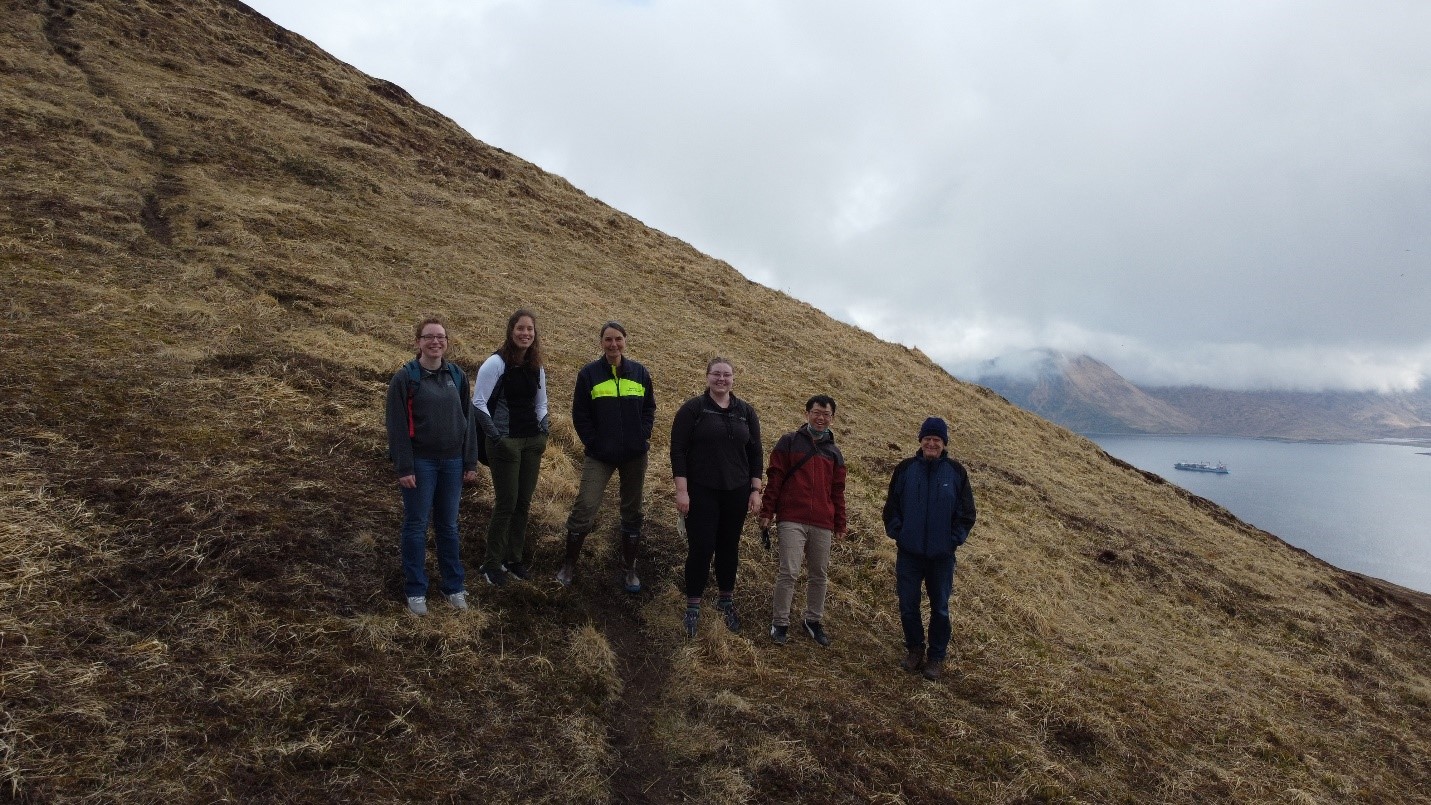
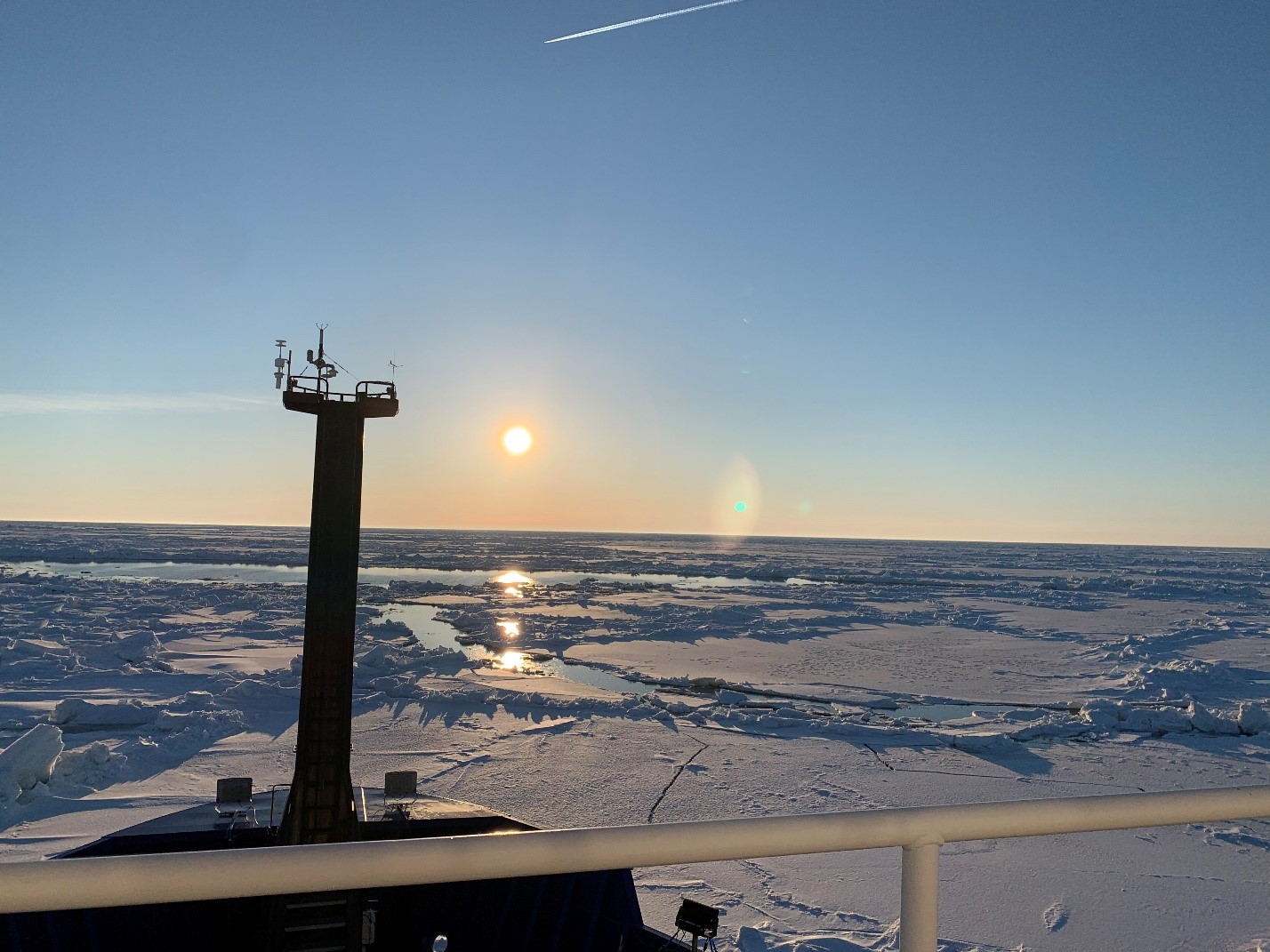
After boarding the ship, the group settled in for three weeks of data collection. To meet research objectives, UConn’s team collected air, water, snow, and ice samples. One unique aspect of cruises to the Arctic is the ability to collect samples from sea ice. During this cruise effort, the science party sampled at 5 different ice stations within the marginal ice zone, the region of seasonal sea ice surrounding annual ice. Sampling on sea ice is a carefully orchestrated process. The ship’s captain and crew meticulously select a section of ice that looks large and stable enough to support several members of the science party. Scientists are briefed on the safe places to walk on the ice, and the Science Operations crew members test the ice before allowing the science party to sample. Equipment and people are typically transported between the ship and the ice using a “man-basket,” or a cage attached to a winch. While on the ice, the science party uses ice-corers to collect ice cores, large augur drills to create holes for collecting ice brine and under-ice water, and shovels for snow. The Arctic environment can be harsh and dangerous, and a team of crew and scientists work as look-outs on the bridge for any potential threats, such as roaming polar bears. In fact, the UConn team saw four different polar bears while on the cruise, three of which were visible while ice sampling was taking place. Seeing polar bears in the wild is a truly unique experience, and observing these animals in their natural habitat was commonly mentioned by the science party as one of their favorite parts of the cruise. Rob adds, “Seeing the bears up close was definitely a highlight. Sampling in the ice and getting out there off the ship was special, but overall being in such a remote beautiful place where very few people go was a highlight.”
